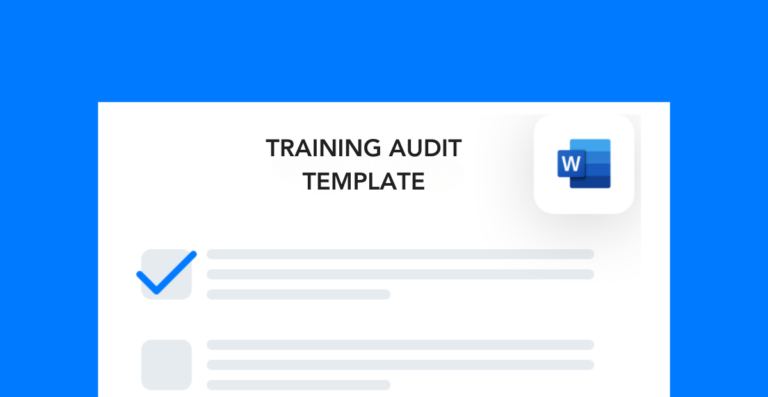Training programs that meet regulatory requirements and satisfy internal standards are a dime a dozen. But creating a great training experience requires you to go beyond compliance and tap into human psychology. To do so, you have to create an environment that’s positive and motivating. And when you optimize your training process, you’ll be able to retain more employees and boost engagement.
What makes for a great training experience?
No two employees have the same experience during training—even if they’re in the same cohort. Personal learning styles, preferences, and motivations affect how workers feel during and after training.
Start by acknowledging that you can’t change how people feel about it. Instead, you should prioritize your team’s interactions with employees and try to make them as positive as possible.
Here are some of the controllable variables that you can focus on and improve:
- Content quality
- Employee participation and engagement
- Organization and sufficient preparation
- Personalization of experience
Let’s look at each of these variables a little closer.
Content quality
Because content is the center of the training experience, you need to spend time developing it. High-quality content is accurate, relevant, and engaging. It teaches the required information while also encouraging discussion and participation.
You want to focus on not only the information in the content but also how you present it. A multimedia approach that involves text, videos, audio, images, and hands-on activities is the best way to keep workers interested throughout the class.
Employee participation and engagement
The more you can get employees to participate in the training, the better the experience. And that’s because social proof is such a motivating factor. The key is to keep the energy level high. You can do this by taking frequent breaks, having people get up out of their seats, and using audio and visual elements to mix it up.
Organization and preparation
Being organized is an essential component to a successful training process. When you show up to a class without the right documentation, equipment, materials, etc., it can confuse workers. The best trainers handle administrative tasks efficiently so they can focus on teaching the material.
The amount of preparation you do before training can have a huge impact on the result. Making sure you have enough space, materials, and resources for everyone means you’ll have less interruptions during the training itself. Plus, it ensures that no one feels like a burden because they don’t have what they need.
Personalization of experience
Workers want to feel appreciated—even if it’s their first day on the job. You can foster a sense of belonging and appreciation by personalizing the training experience. Examples of how to do that include:
- Giving workers personalized company swag
- Using employee names in examples or role plays
- Doing icebreakers to learn more about the attendees
The purpose of all this is to give employees a voice and make them feel seen. Even the smallest efforts to personalize the experience demonstrate how much you care for and appreciate your team.
Training pitfalls to avoid
One of the biggest mistakes you can make is to let your training program stay stagnant. Most likely, your processes, equipment, and procedures will change over time. If you don’t update training to match, then it’ll become outdated and irrelevant.
Here are some other training program pitfalls to avoid:
- Not being organized and prepared when employees show up to training
- Using images and videos that don’t match your current processes or equipment
- Providing too much information without enough retention checks
- Not following up with new hires in the weeks after initial training
- Creating boring and forgettable content and training materials
- Discouraging discussion and questions during training
- Not adding interactive elements to the lessons
- Failing to provide support resources following training
Avoiding these pitfalls is important if you want to offer a truly great training experience for your workers. The best way to know how your employees feel about training is to seek feedback from them afterwards. A simple questionnaire or in-person discussion about the training itself can give you a lot of insight into how to improve your approach.
Tips for leveling up
You’ll need to continuously review and adjust your training program over time. That way, you can keep the content fresh and accurate. Here are some ways you can level up your approach for continued excellence:
- Use a learning management system (LMS) to track and document training.
- Provide remote learning options for topics that don’t require in-person instruction.
- Set aside time for fun activities during the training process.
- Offer continuing education opportunities for workers to learn new skills.
- Allow workers to practice with tools and equipment before starting work activities.
- Keep class sizes small (if possible) for a more personal experience.
You don’t have to spend a ton of money to create a great training experience for your employees. Oftentimes, what makes the difference is the amount of care and preparation you put into the process. If you can implement some of these tips and refine your approach, then you should be able to foster a positive, productive work environment.
Other posts you might like…
No posts

